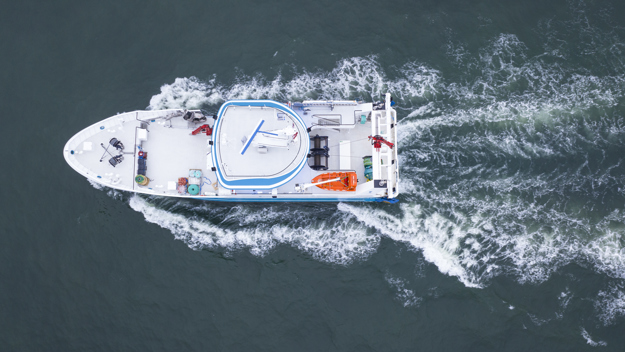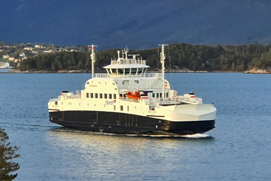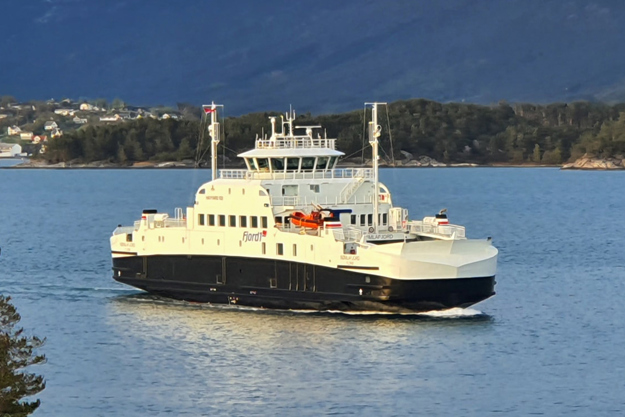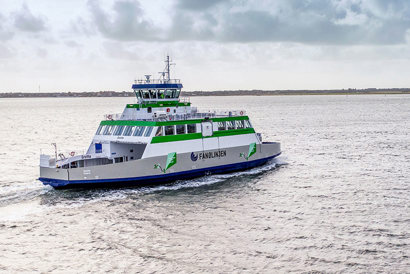
“Shore supply to rigs provides a huge improvement in saved CO2 and NOx emissions. We have roughly calculated that a rig will save 10 to 15 tonnes emissions per day. This represents an annual saving of 4,500 tonnes of emissions.” - CCB Project Manager, Sveinung Vethe.
A better tomorrow is driven by drives
Docked oil rigs spend large sums on diesel power generation and normally represent major local CO2 and NOx emissions, when parked at Norwegian yards. However vessels visiting Coast Centre Base in Norway now win huge power savings thanks to a shore supply system developed and delivered by SEC and Frekvensomformer.no.
By closing down their own generators they save up to 5,000 litres of diesel every day. And the benefits don’t stop there. The air is cleaner and the port is quieter, too.
The shore power system is a popular choice amongst vessels harbored at CCB. It offers very competitive power prices, as well as the benefits of the fuel savings. Norway enjoys very low electricity prices due to its large hydroelectric power stations. This helps to make the shore power system an attractive alternative to diesel generators, even in periods where fuel prices are low.
Trial before purchase
Initially CCB rented a shore power supply container from SEC and Frekvensomformer.no to get some experience with the technology. The feedback from their customers was very positive – so they decided to invest in their own transformer substation for shore power containers from SEC.
As well as purchasing the shore power container itself, a new substation and larger power cables were required Therefore in order to establish the shore power supply, CCB had to invest in improved infrastructure.
At quayside or on deck
The shore power container is very flexible. It can either be placed on the deck of the rig or on the quay side. The shore power supply container is typically placed on the deck of a semisub rig located at CCB while it is waiting for the next contract. The alternative to supplying the rig from shore power would be to operate the rig on its own generators – which consume approximately 5,000 litres of diesel daily. The shore power supply can thus save a lot of local pollution in the port area of Ågotness – while also saving money for the vessel owner.
CCB Project Manager Sveinung Vethe explains: “We have the capacity to supply one rig, currently the COSLPioneer, with clean shore power. In the future our goal is to expand capacity to supply all rigs with clean power – so we will definitely invest in more systems in the future”.
Not least, CCB is well-prepared in the event that shore power supply becomes a legal requirement – which is a likely scenario. In fact the ports of Bergen and Stavanger are already recognized in the industry as clear candidates for expansion with dozens of shore supply units, due to the large volume of ships and rigs from the North Sea oilfields, which regularly visit the harbors for extended periods.
Shore power supply offers tremendous potential both for the rig customer and the environment. “Shore supply to rigs provides a huge improvement in saved CO2 and NOx emissions. We have roughly calculated that a rig will save 10 to 15 tonnes per day. This represents an annual saving of 4,500 tonnes of emissions”, explains Sveinung Vethe.
Shore power supply uses VACON® NXP drive modules
SEC and Frekvensomformer.no have produced a significant number of shore power systems in the power range from 400 kVA to 1,200 kVA. The systems are built into 10- and 20-foot steel containers. Each container is tailor-made for optimum:
- Ease of connectivity
- Cooling
- Robustness for reliability
All shore power systems with conversion from 50 Hz to 60 Hz are equipped with VACON® NXP Active Front End and VACON® NXP Grid Converter modules. SEC and Frekvensomfromer.no combine the grid converter features and active front end features in the VACON® NXP drives with their own control system and user interface, which make the shore power system very easy to operate. They have good experience with the VACON® NXP drives.
The shore power supply systems are typically used to supply ships and offshore rigs on short- and medium-term port stays up to six months, where the vessels are hot stacked: idle, but operational and ready for service. When required, SEC supports the harbors with commissioning and service.
Shore-to-ship partners
SEC AS in Bergen is a total supplier of customized offshore equipment and production services, including prefabrication and construction of advanced technological systems for the oil and gas industry. SEC is located close to CCB, and the two companies have established a long-term cooperation.
SEC was founded in 2002, and has now become one of the pioneers within shore-to-ship power supply systems in Norway. Eirik Sørensen was appointed as general manager in 2014.
SEC works closely with Sverre Knapstad from Frekvensomformer.no to design, manufacture and sell shore power supplies, primarily for the Norwegian marine and offshore markets. Together they also build power supply systems with step-up transformers to operate 3.3 or 6.6 kV subsea pumps.
The designers have created a customized interface which makes the operator’s task easy, and provides an extremely good overview (see pictures below).
Coast Center Base
Located at Ågotnes in Fjell municipality, Coast Center Base (CCB) is about a 20 minute drive from the center of Bergen, Norway. The company has been in operation since 1973 and has built up considerable expertise as a service provider, in technical maintenance and harbor operations.
The base, which covers about 7 hectares, has 1,000 metres of quays, some with a very good water depth (50 m) and no weight limits, 68,600 m2 of workshops and warehouses and 20,600 m2 of office buildings. CCB is the main base for supply activities to the petroleum fields in the Tampen area of the North Sea. These are Statfjord, Gullfaks, Veslefrikk, Troll, Huldra and Kvitebjørn fields.
CCB offers:
- Provision of services and supply to the petroleum activities offshore
- The North Sea basin’s largest subsea community with an offshore subsea test well reachable from quay
- Harbor terminal services for traditional line shipping
- Maintenance services - IRM - for rigs and vessels
All power conversion installations
-
if (isSmallPicture) {


 PSW and Danfoss: Flexible onshore power for berthed cruise ships
PSW and Danfoss: Flexible onshore power for berthed cruise shipsNORWAY & SWEDEN: PSW (Power and Automation AS) paired up with Danfoss to create compact OPS solutions in three Nordic harbors: Stockholm, Ålesund and Haugesund/Karmsund.
-
if (isSmallPicture) {


 World’s first ferry powered by iC7-Marine: Aurora Botnia
World’s first ferry powered by iC7-Marine: Aurora BotniaFINLAND: The Aurora Botnia cargo and passenger ferry is equipped with a hybrid-electric propulsion system, powered by liquid-cooled iC7 drives from Danfoss.
-
if (isSmallPicture) {


 VACON® drives electrify passenger ferries in Oslo Fjord
VACON® drives electrify passenger ferries in Oslo FjordNORWAY: Electrification of the Nesodden ferries has reduced CO2 emission in the port of Oslo. VACON® drives and power converters play a key role onboard.
-
if (isSmallPicture) {


 Decarbonizing the next-generation training ship, Skulebas
Decarbonizing the next-generation training ship, SkulebasNORWAY: The new training vessel at Maløy Fishing School uses less diesel and emits less CO2, while also meeting the rigorous demands of the fishing industry.
-
if (isSmallPicture) {


 Where smart ferry charging begins with a smart grid
Where smart ferry charging begins with a smart gridNORWAY: The Hareid-Sulesund ferry operations have reduced CO2 emissions by 7000 tonnes annually with the introduction of electric vessels. In transitioning ferries from diesel to pure electric power, powerful onshore support is essential, in the form of reliable infrastructure for rapid charging capacity and stable grid supply. The systems on board and on shore act as a single system – a sophisticated and competitive system developed by Norwegian Electric Systems (NES) using Danfoss technology.
-
if (isSmallPicture) {


 Danfoss powers 100 percent electric ferry sailing World Heritage waters
Danfoss powers 100 percent electric ferry sailing World Heritage watersMolslinjen – Denmark's largest domestic ferry company – has set its first electric ferry in motion. The E-ferry Grotte will be breaking waves at the UNESCO World Heritage waters between the coastal town of Esbjerg and the island Fanø – and Danfoss is on board. The future holds great potential to operate shorter routes by electric ferries.


















